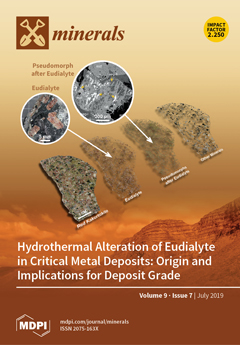Chemical diversity of minerals containing selenium as an essential element has been analyzed in terms of the concept of mineral systems and the information-based structural and chemical complexity parameters. The study employs data for 123 Se mineral species approved by the International Mineralogical Association as of 25 May 2019. All known selenium minerals belong to seven mineral systems with the number of essential components ranging from one to seven. According to their chemical features, the minerals are subdivided into five groups: Native selenium, oxides, selenides, selenites, and selenates. Statistical analysis shows that there are strong and positive correlations between the chemical and structural complexities (measured as amounts of Shannon information per atom and per formula or unit cell) and the number of different chemical elements in a mineral. Analysis of relations between chemical and structural complexities provides strong evidence that there is an overall trend of increasing structural complexity with the increasing chemical complexity. The average structural complexity for Se minerals is equal to 2.4(1) bits per atom and 101(17) bits per unit cell. The chemical and structural complexities of O-free and O-bearing Se minerals are drastically different with the first group being simpler and the second group more complex. The O-free Se minerals (selenides and native Se) are primary minerals; their formation requires reducing conditions and is due to hydrothermal activity. The O-bearing Se minerals (oxides and oxysalts) form in near-surface environment, including oxidation zones of mineral deposits, evaporites and volcanic fumaroles. From the structural viewpoint, the five most complex Se minerals are marthozite, Cu(UO
2)
3(SeO
3)
2O
2·8H
2O (744.5 bits/cell); mandarinoite, Fe
2(SeO
3)
3·6H
2O (640.000 bits/cell); carlosruizite, K
6Na
4Na
6Mg
10(SeO
4)
12(IO
3)
12·12H
2O (629.273 bits/cell); prewittite, KPb
1.5ZnCu
6O
2(SeO
3)
2Cl
10 (498.1 bits/cell); and nicksobolevite, Cu
7(SeO
3)
2O
2Cl
6 (420.168 bits/cell). The mechanisms responsible for the high structural complexity of these minerals are high hydration states (marthozite and mandarinoite), high topological complexity (marthozite, mandarinoite, carlosruizite, nicksobolevite), high chemical complexity (prewittite and carlosruizite), and the presence of relatively large clusters of atoms (carlosruizite and nicksobolevite). In most cases, selenium itself does not play the crucial role in determining structural complexity (there are structural analogues or close species of marthozite, mandarinoite, and carlosruizite that do not contain Se), except for selenite chlorides, where stability of crystal structures is adjusted by the existence of attractive Se–Cl closed-shell interactions impossible for sulfates or phosphates. Most structurally complex Se minerals originate either from relatively low-temperature hydrothermal environments (as marthozite, mandarinoite, and carlosruizite) or from mild (500–700 °C) anhydrous gaseous environments of volcanic fumaroles (prewittite, nicksobolevite).
Full article





